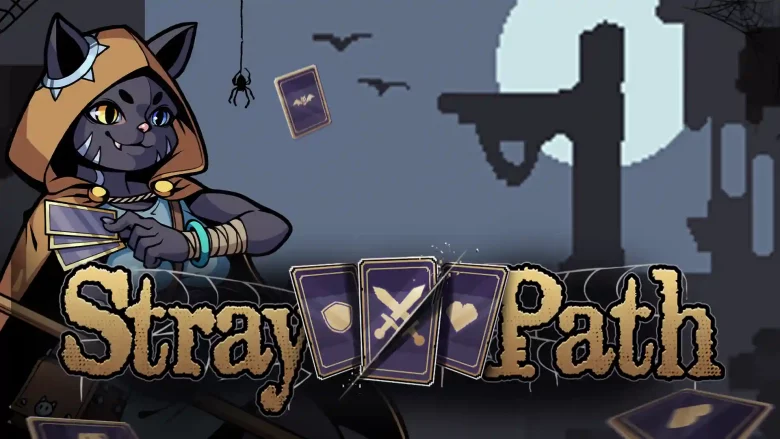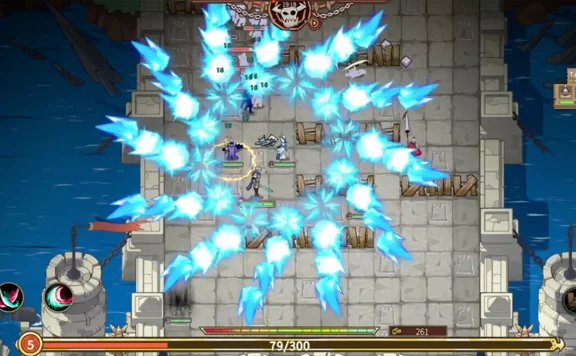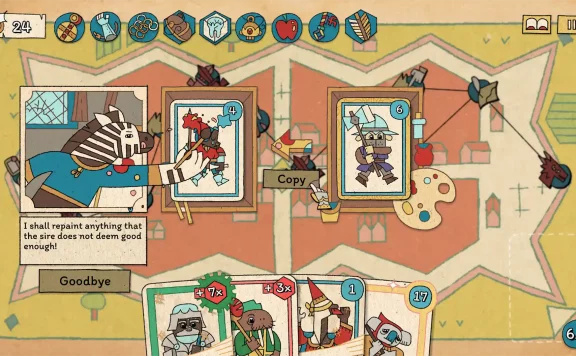Another day, another card-based rogue-lite with persistent elements. No, wait! Come back! What if I were to tell you that this one has something extra, a little je ne sais quoi that marks this out from the pack? Perhaps you like a little sprinkle of strategy in your comfy gaming? The aroma of Solitaire in your solitary endeavours? Stray Path has all of this and more.
Described as “an adventure and strategy game” by Stray Paths publisher Yogscast Games, this is in more of an optimisation challenge. Presented with a FreeCell-likecollection of cards to choose from, you are tasked with taking your chosen avatar (from six unlockable options, each with unique characteristics) through a randomly generated world to defeat the big bad at the end. So far, so Slay the Spire, yeah? It’s in the repositioning of these cards that Stray Path shows its hand.
Piles of cards will be either enemies, loot, upgrades, consumable items or paths to another area of the game. With two spaces in which to store consumables, you’ll be constantly chopping and changing your loadout, with unneeded items being disposed of for cold, hard cash making for an interesting mechanic of difficult choices. Should you keep extra health potions to hand for particularly gruelling encounters or carry extra weaponry to unleash devastating fury on your foes?
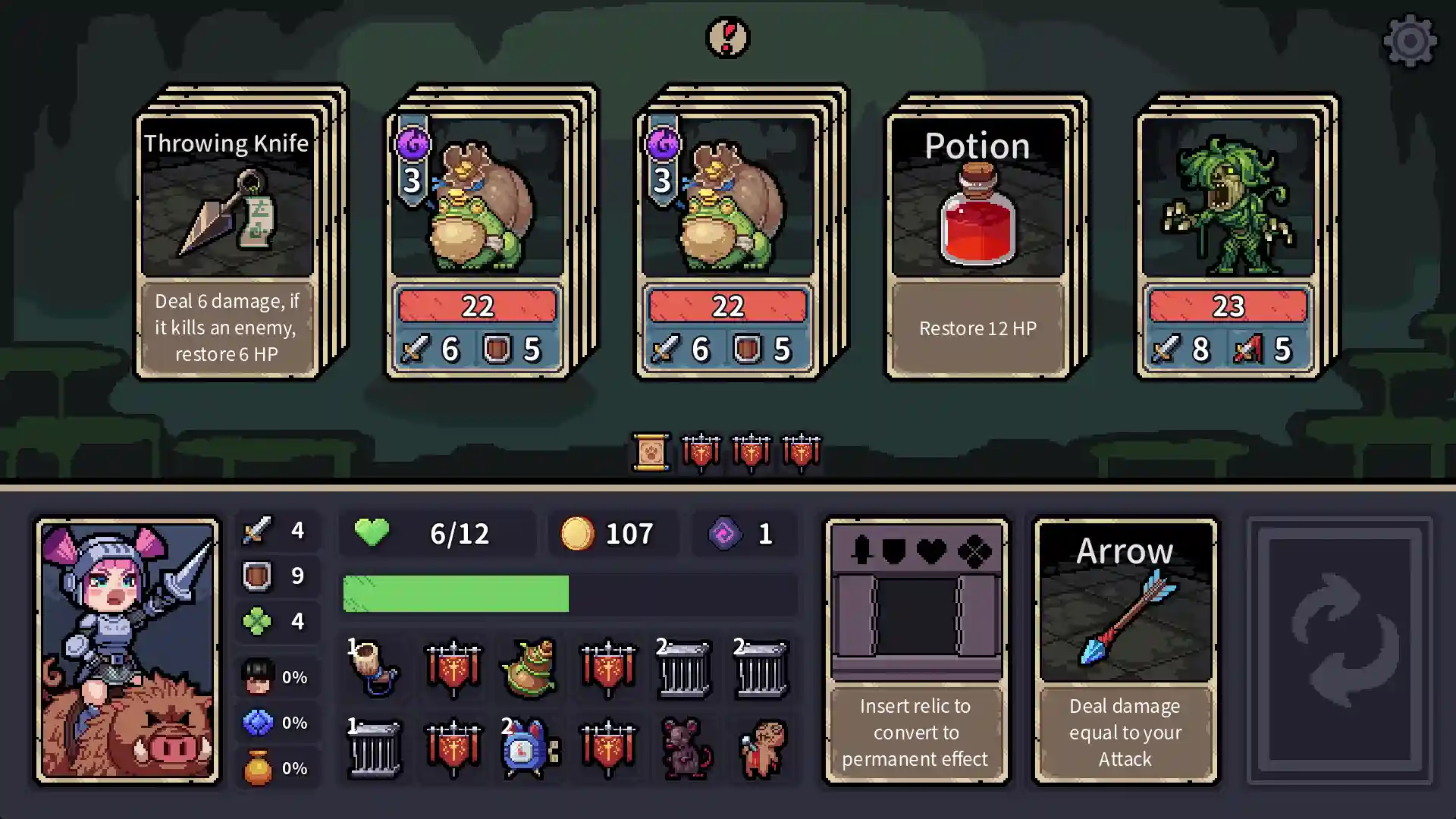
Combat is a straight-forward affair with your attack score being weighed up against the opponents defence to calculate damage done, usually with a retaliatory hit for your troubles. Some enemies will have attributes to affect the character’s choices such as extra damage dealt when other enemy cards are destroyed or leaving a hit-point decimating bomb in your inventory upon their demise, a parting “screw you” gift. It’s the way in which you work around these problems that are the main draw to Stray Path.
As piles of cards are destroyed, much like in the classic card game FreeCell you can move other cards to replace them, allowing a peek at the next card underneath, be it a treasure chest full of rewards such as gold or a relic (to provide buffs to your character), a more deadly adversary or the way out to the next area. It’s at this tipping point that you decide whether to press onward with the loot that you have, look for more consumable goodies to improve your run or risk further combat encounters. This balance of risk versus reward is what has kept me coming back for more, the constant allure of risking it all for a potentially game-winning synergy between items or relics.
Relics are key to your progression, with each character having a series of unique unlocks. These can offer stronger defence bonuses, NPC allies to fight alongside you, dice to randomise your attack damage and more. Some can be placed in alters to be buffed even further using the in-game runes as fuel for the fire whilst others can be converted to permanent attributes, freeing up space for even more customisation. There’s loads to find and unlock as you repeatedly attempt to make your way through the randomly generated dungeons.
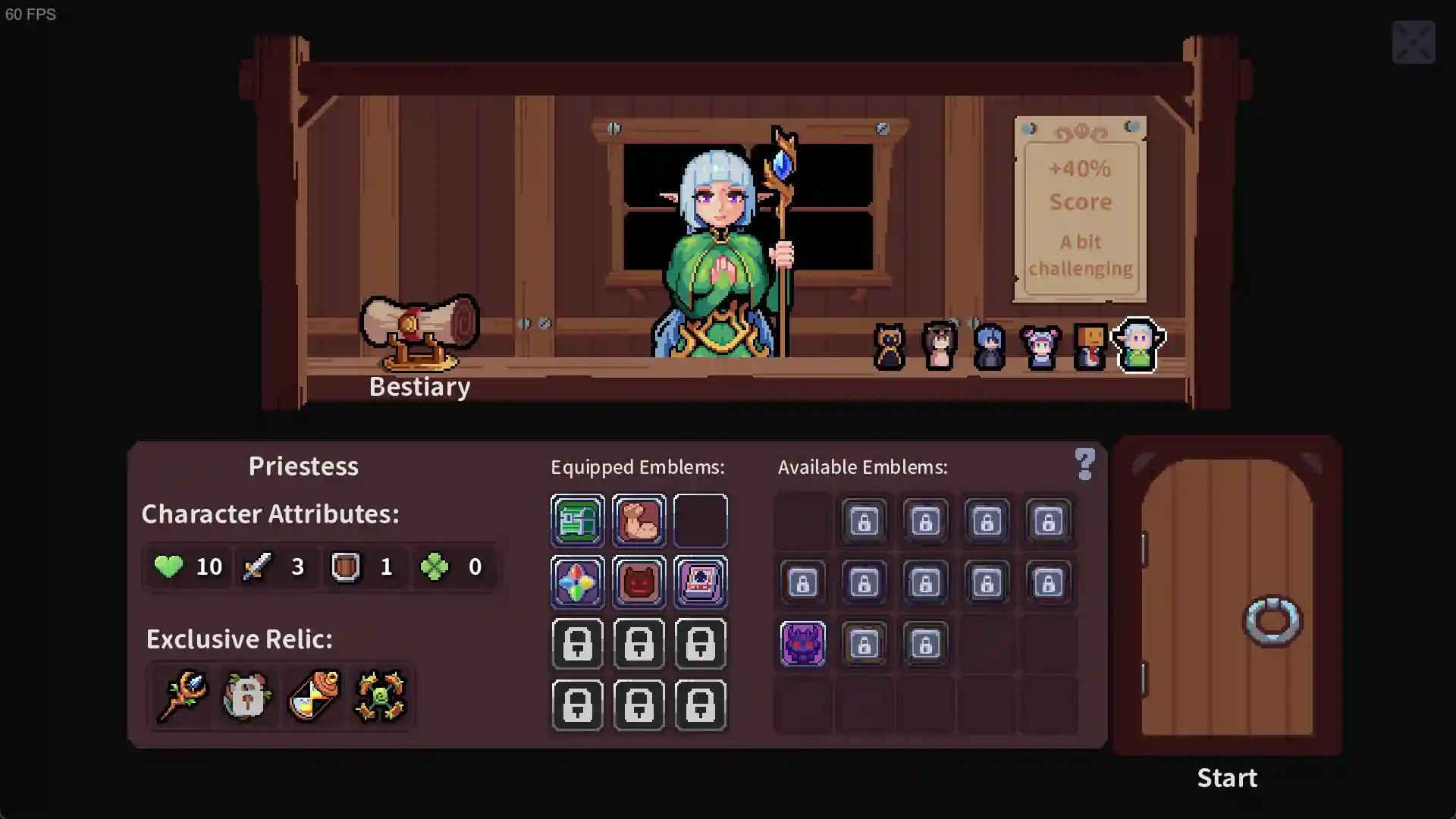
Speaking of unlocks, emblems can be also be unlocked in the main menu using in-game currency and assigned at the start of each run, offering a selection of modifiers to further make each attempt to beat the game either a tad easier or even harder, depending on your current mood. Add extra health from the off, mix and match chest rewards from each character or change the difficulty of enemies for a stiffer challenge, maybe even give the bosses new move-sets. It’s a highly customisable With emblem slots being unlocked by high scores of previous runs, it’s possible to have up to 8 slots of game changing rules in play at any one time, offering as much or as little challenge as your heart desires. It’s a simple yet great way to offer the exact level of challenge that a player wants, when they want it.
There’s been more than one run that has been destroyed by the choices I’ve made earlier, maybe choosing attack power over defence or by buffing the wrong relic but whilst this may sound unfair, each run can be played through so quickly, it’s never really felt like much of a slap to the face. It’s a case of learning from your mistakes and praying to the RNG-Gods that the next attempt will result in glory not abject failure.
A now permanent install on my Steam Deck, Stray Path is a bite size adventure in your pocket, ideal for those few moments of down time where you would otherwise doom-scroll socials. With a soundtrack that oddly reminds me of the repeated melody from the Assassin’s Creed series, it’s one of the only parts of the game that I found to be a little repetitive, which is kind of an achievement when you consider that this is a rogue-lite.
